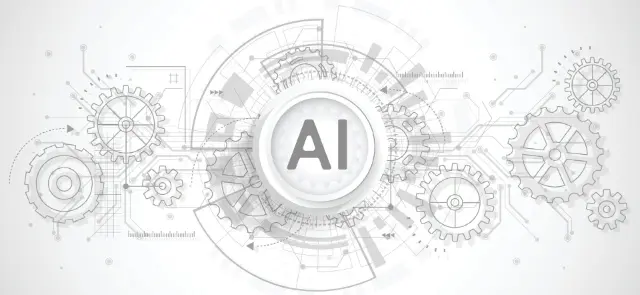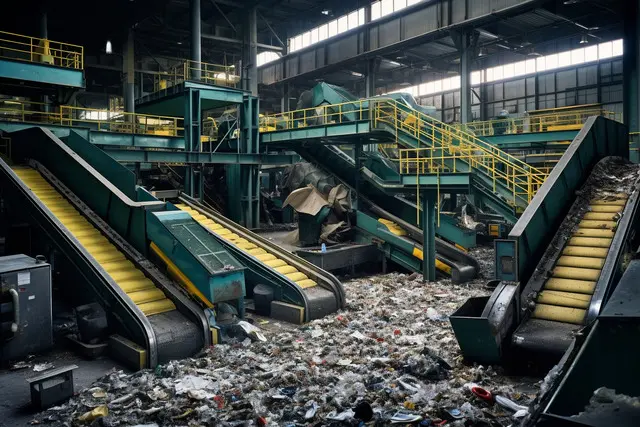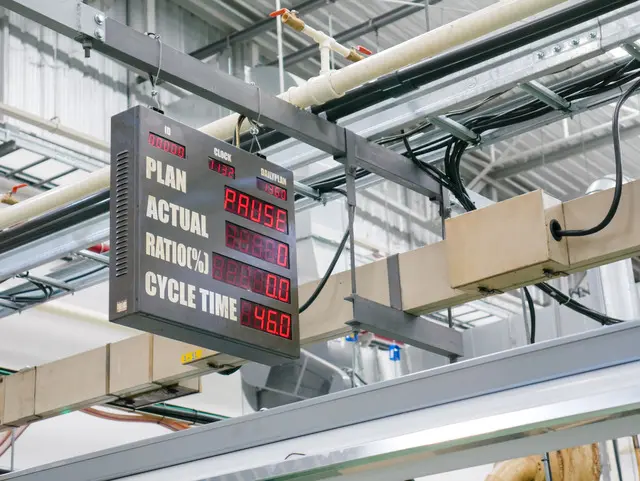Empowering Manufacturing with Scrap and Waste Management Automation
In the ever-evolving landscape of manufacturing, minimizing material waste and optimizing resource utilization are paramount for businesses seeking efficiency and sustainability. Scrap and waste management automation emerges as a game-changer, addressing the challenges of scrap identification, sorting, and disposal with precision and accuracy.
Harnessing the power of Python, AI, and cloud-based solutions, manufacturers can automate their scrap and waste management processes, streamlining operations and unlocking significant benefits. This transformative approach empowers businesses to:
- Enhance material utilization, reducing waste and production costs
- Improve operational efficiency, freeing up valuable resources for core activities
- Gain real-time visibility into waste generation, enabling targeted interventions
- Implement data-driven decision-making, identifying root causes of waste and implementing corrective actions
By embracing scrap and waste management automation, manufacturers can elevate their operations to new heights of productivity and sustainability, driving innovation and competitive advantage in today’s dynamic market.

Python, AI, and Cloud: The Cornerstones of Scrap and Waste Management Automation
Python: The Foundation for Unattended and Attended Bots
Python’s versatility and extensive library ecosystem make it the ideal choice for developing both unattended and attended bots for scrap and waste management automation.
Unattended bots can be programmed to perform repetitive tasks without human intervention, such as:
- Monitoring production lines for scrap generation
- Sorting and categorizing scrap materials
- Generating reports on waste disposal
Attended bots, on the other hand, collaborate with human workers to enhance their productivity and accuracy. For example, an attended bot can assist a warehouse worker in:
- Identifying the correct disposal bin for a specific type of scrap
- Recording the weight and type of scrap disposed of
- Generating real-time updates on waste generation
Python’s ease of use and customization capabilities empower businesses to tailor bots to their specific needs, maximizing the benefits of scrap and waste management automation.
Cloud Platforms: Orchestrating Automation at Scale
Cloud platforms offer a comprehensive suite of features and capabilities that far surpass those of traditional RPA/workflow tools. By leveraging the cloud, businesses can:
- Orchestrate complex automation workflows: Cloud platforms provide a centralized platform for managing and coordinating multiple bots, ensuring seamless execution of complex processes.
- Access advanced analytics and reporting: Cloud platforms offer built-in analytics tools that provide real-time insights into automation performance and waste generation patterns, enabling data-driven decision-making.
- Scale automation effortlessly: Cloud platforms offer elastic scalability, allowing businesses to easily adjust their automation capacity based on demand, ensuring optimal performance during peak periods.
AI: Enhancing Accuracy and Handling Edge Cases
AI techniques, such as image recognition, natural language processing (NLP), and Generative AI (Gen AI), can significantly enhance the accuracy and capabilities of scrap and waste management automation.
- Image recognition: AI algorithms can analyze images of scrap materials to identify and classify them accurately, even in complex or cluttered environments.
- NLP: AI can process unstructured data, such as text or voice commands, to extract relevant information and automate tasks, such as recording waste disposal data.
- Gen AI: Generative AI models can create realistic synthetic data to train and improve the performance of automation models, handling edge cases and rare scenarios that may be difficult to capture in real-world data.
By integrating AI into their scrap and waste management automation solutions, businesses can achieve unprecedented levels of accuracy and efficiency, maximizing the benefits of this transformative technology.

Building the Scrap and Waste Management Automation Solution
Sub-processes and Automation Steps
The automation of scrap and waste management processes involves several key sub-processes:
- Scrap identification: Using image recognition AI, bots can analyze images of scrap materials to identify and classify them accurately.
- Scrap sorting: Based on the identified material type, bots can control robotic arms or conveyor belts to sort scrap materials into designated bins.
- Waste tracking: Bots can record the weight and type of scrap disposed of, generating real-time updates on waste generation.
- Root cause analysis: AI algorithms can analyze waste generation data to identify patterns and trends, helping businesses pinpoint the root causes of waste.
- Corrective action implementation: Bots can trigger automated workflows to implement corrective actions, such as adjusting production parameters or training employees on proper waste disposal practices.
Python and Cloud: A Powerful Combination
Python and cloud platforms provide a powerful combination for building scrap and waste management automation solutions. Python’s versatility and the cloud’s scalability and advanced features enable businesses to:
- Develop complex automation workflows that can handle a wide range of scenarios
- Access real-time data and analytics to optimize automation performance
- Scale automation effortlessly to meet fluctuating demand
Data Security and Compliance
Data security and compliance are paramount in manufacturing, especially when dealing with sensitive production and waste disposal data. Python and cloud platforms offer robust security features, including encryption, access controls, and compliance certifications, ensuring the protection of sensitive data.
Advantages of Python over No-Code RPA/Workflow Tools
While no-code RPA/workflow tools offer a low-code/no-code approach to automation, they often come with limitations in terms of:
- Customization: No-code tools may not provide the flexibility to tailor automations to specific business needs.
- Scalability: No-code tools may struggle to handle complex or large-scale automation scenarios.
- Integration: No-code tools may not integrate seamlessly with existing IT systems and data sources.
Python, on the other hand, offers greater flexibility, scalability, and integration capabilities, making it the ideal choice for building robust and tailored scrap and waste management automation solutions.
Algorythum’s Approach to BPA
Algorythum recognizes the limitations of off-the-shelf automation platforms and takes a different approach to BPA. By leveraging Python and cloud technologies, Algorythum provides clients with:
- Customized solutions: Tailored to the specific needs and processes of each client.
- Scalable and reliable automation: Designed to handle complex and large-scale automation scenarios.
- Seamless integration: Integrated with existing IT systems and data sources for comprehensive automation.
Algorythum’s approach has resulted in significant client satisfaction and improved performance outcomes, empowering businesses to maximize the benefits of scrap and waste management automation.

The Future of Scrap and Waste Management Automation
The future of scrap and waste management automation holds exciting possibilities for businesses looking to further enhance their efficiency and sustainability.
Integration with IoT and Edge Computing
By integrating scrap and waste management automation with IoT sensors and edge computing devices, businesses can gain real-time visibility into their waste generation processes. This data can be used to optimize automation workflows, identify areas for improvement, and reduce waste even further.
Blockchain for Data Security and Traceability
Blockchain technology can be leveraged to create a secure and transparent record of waste disposal activities. This can help businesses comply with environmental regulations, track the movement of waste materials, and prevent illegal dumping.
AI and Machine Learning for Predictive Analytics
Advanced AI and machine learning algorithms can analyze historical waste generation data to predict future waste patterns. This information can be used to optimize production processes, reduce waste at the source, and improve the efficiency of waste disposal operations.
Subscribe and Contact Us
To stay updated on the latest advancements in scrap and waste management automation, subscribe to our newsletter.
For businesses looking to implement a customized scrap and waste management automation solution, contact our team today. We offer a free feasibility assessment and cost estimate to help you determine the best approach for your specific needs.
Together, we can unlock the full potential of scrap and waste management automation and drive your business towards a more sustainable and efficient future.

Algorythum – Your Partner in Automations and Beyond
At Algorythum, we specialize in crafting custom RPA solutions with Python, specifically tailored to your industry. We break free from the limitations of off-the-shelf tools, offering:
- A team of Automation & DevSecOps Experts: Deeply experienced in building scalable and efficient automation solutions for various businesses in all industries.
- Reduced Automation Maintenance Costs: Our code is clear, maintainable, and minimizes future upkeep expenses (up to 90% reduction compared to platforms).
- Future-Proof Solutions: You own the code, ensuring flexibility and adaptability as your processes and regulations evolve.









